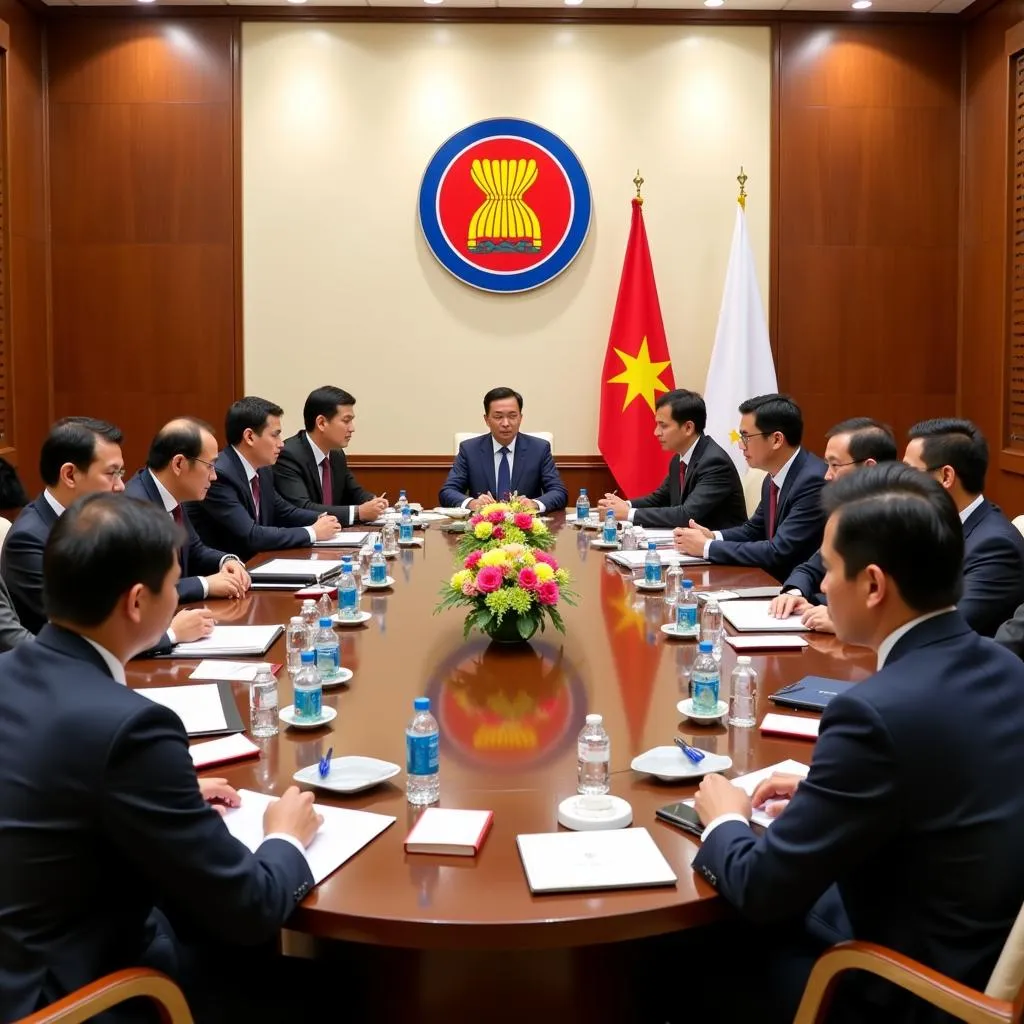The ASEAN Economic Community (AEC) Blueprint 2025 represents a significant milestone in Southeast Asia’s journey towards regional integration. This ambitious roadmap, building upon the successes of the AEC 2015, aims to create a more cohesive, competitive, and resilient economic region by 2025. Asean Aec 2025 focuses on key areas for development, fostering greater connectivity, innovation, and inclusivity within the region.
Understanding the Vision of ASEAN AEC 2025
The ASEAN AEC 2025 Blueprint is not just about economic growth; it’s about building a truly integrated community. It envisions a highly integrated and cohesive economy, where goods, services, investments, and skilled labor flow seamlessly across borders. This involves streamlining regulations, harmonizing standards, and promoting greater public-private partnerships. The goal is to create a dynamic and interconnected region that can effectively compete on the global stage. The AEC 2025 prioritizes inclusivity, ensuring that the benefits of economic integration are shared equitably across all member states, contributing to poverty reduction and sustainable development. It also seeks to create a more resilient ASEAN, better equipped to withstand economic shocks and global uncertainties.
Key Pillars of the ASEAN AEC 2025
The AEC 2025 is built upon five key pillars, each designed to address specific aspects of economic integration. These pillars include:
- A Highly Integrated and Cohesive Economy: This pillar focuses on further reducing tariff and non-tariff barriers, strengthening regional value chains, and enhancing regulatory coherence.
- A Competitive, Innovative, and Dynamic ASEAN: This involves promoting innovation and entrepreneurship, developing a skilled workforce, and fostering a conducive business environment.
- Enhanced Connectivity and Sectoral Cooperation: This pillar emphasizes improving infrastructure, promoting digital connectivity, and deepening cooperation in key sectors such as energy, tourism, and agriculture. Check out the progress made during the ASEAN 50th anniversary 2017.
- A Resilient, Inclusive, People-Oriented, and People-Centred ASEAN: This aims to ensure that the benefits of economic integration reach all segments of society, promoting inclusive growth and social development.
- A Global ASEAN: This pillar focuses on strengthening ASEAN’s external relations, promoting regional economic integration with other global partners, and advocating for a rules-based multilateral trading system. You can find information on related summits such as the ASEAN 33nd summit.
What are the challenges facing ASEAN AEC 2025?
While the AEC 2025 offers significant opportunities, it also faces various challenges, including differing levels of development among member states, non-tariff barriers, and the need for greater regulatory harmonization. Overcoming these challenges will require sustained commitment and cooperation from all ASEAN members. You can see some of the efforts and achievements of ASEAN 2017.
Benefits of a Fully Realized ASEAN AEC 2025
A fully realized ASEAN AEC 2025 has the potential to transform Southeast Asia into a major global economic powerhouse. This translates to increased trade and investment, greater job creation, improved living standards, and a more prominent role for ASEAN on the world stage. The AEC offers opportunities for businesses to expand their markets, access a wider pool of talent, and participate in regional value chains. It empowers individuals through increased mobility and access to education and skills development.
For more details on ATF, visit ASE-050-ATF 17. For information regarding the 2019 anniversary, check out ASEAN anniversary 2019.
Conclusion
The ASEAN AEC 2025 represents a bold vision for a more integrated and prosperous Southeast Asia. By focusing on its five key pillars, the AEC aims to create a dynamic, competitive, and inclusive economic community. While challenges remain, the potential benefits of a fully realized AEC 2025 are immense, offering significant opportunities for businesses, individuals, and the region as a whole. The journey towards achieving the goals of ASEAN AEC 2025 requires ongoing collaboration and commitment from all stakeholders.
FAQ
- What is the main goal of ASEAN AEC 2025? To establish a highly integrated, cohesive, and competitive economic region.
- What are the five key pillars of the AEC 2025? Highly Integrated Economy, Competitive ASEAN, Enhanced Connectivity, Inclusive ASEAN, and Global ASEAN.
- How will the AEC 2025 benefit businesses? Through increased market access, wider talent pools, and regional value chain participation.
- How will the AEC 2025 benefit individuals? Through increased mobility, access to education, and skills development.
- What are some of the challenges facing the AEC 2025? Differing levels of development, non-tariff barriers, and regulatory harmonization.
- How can I learn more about the AEC 2025? By visiting the ASEAN website and consulting official publications.
- What is the role of the private sector in the AEC 2025? To actively participate in shaping the future of the AEC by contributing to policy discussions and implementing initiatives that support the AEC’s goals.
Need support? Contact us 24/7: Phone: 0369020373, Email: [email protected], or visit us at Thon Ngoc Lien, Hiep Hoa, Bac Giang, Vietnam.

